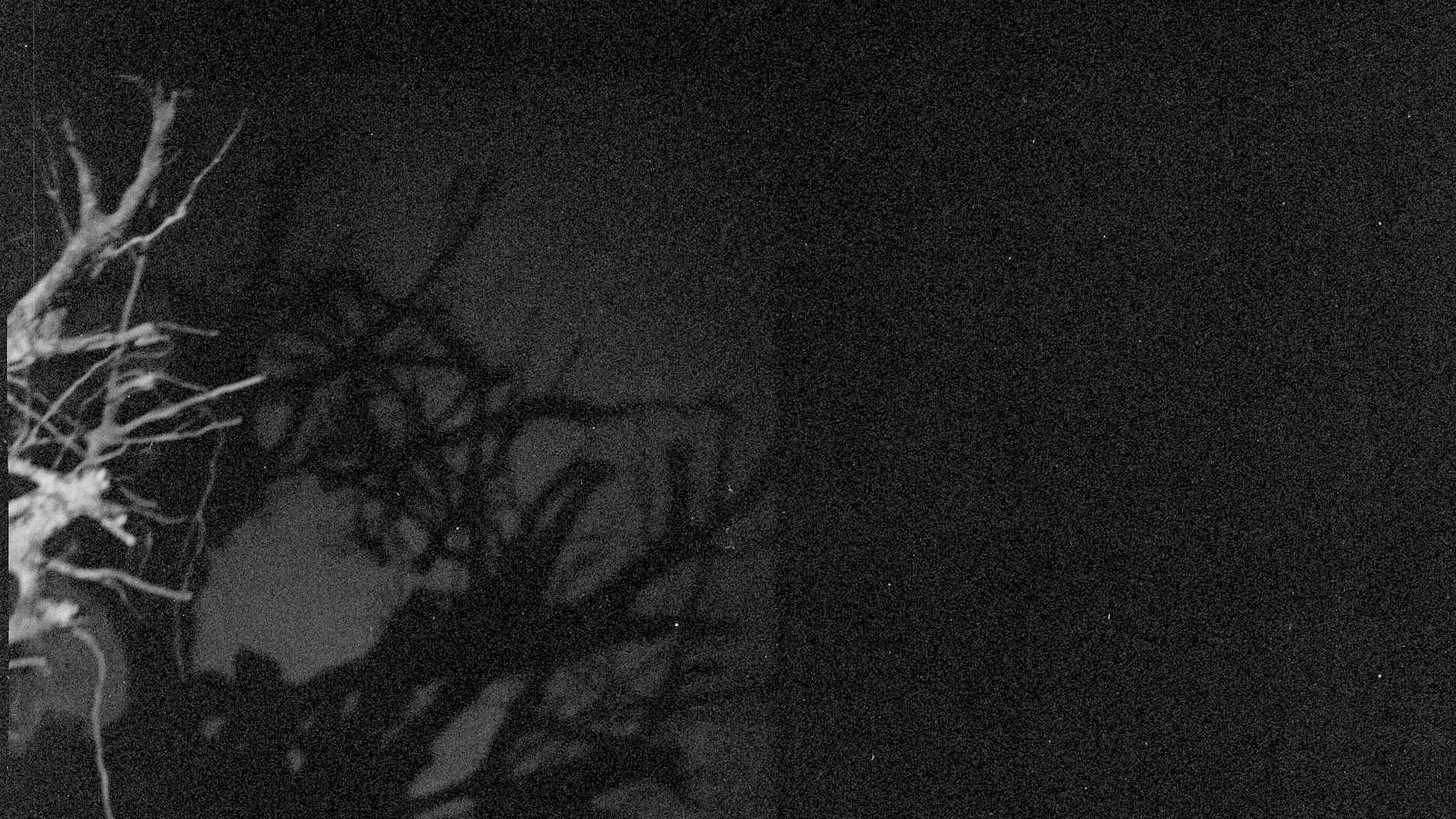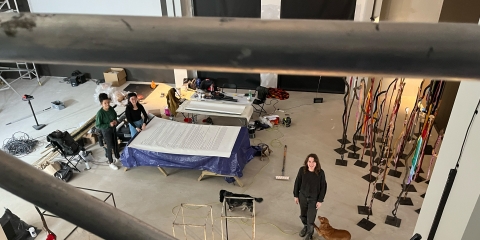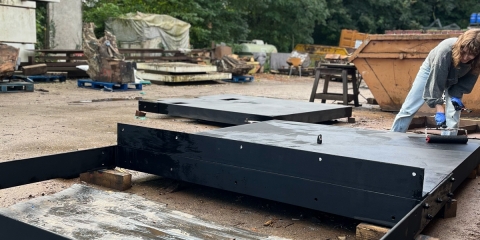This is a Forest – Ending
Journal, Research and Development, ResidenciesThis is a Forest – Ending

This is a Forest, our collaborative installation in the center of Leeds came to end last week. It has run for the best part of two months. This week it is time to uninstall it, to pack the fragile ceramic seeds and glass resonators into boxes, to wrap the walking sticks and begin their journey back the Arctic, and for the not insignificant task of moving the 2ton root plate that sat at the heart of Howl back to the woodland edge by our studio where we found it and allow it to begin in its decades long journey of decomposition and return to the earth.
Seeing pieces come to a close is always a bittersweet moment. On the one hand there is the work and physical and mental capacity of having work live that I’m sure anyone who has ever created something to show to the public can relate to. But then there is the deeper effect of the passing of time. Each work represents months or years of thought and exploration, in the case of our two new works in This is a Forest they held a lot of emotion for us as artists.
Presenting work in the city where Invisible Flock started out and where we are still at least tenuously associated (our studio is no longer in the city and none of us actually live in Leeds) is something we haven’t done for nearly a decade and working closer to home has allowed these works to feel more intimate. Its attempt to engage with the city and the institutional failure that prevented it from doing so felt all the more acute and hopefully reflects into the and through the work.

As work begins to take This is a Forest apart we find ourselves far away embarking on a different yet interconnected journey in a radically different context. For the second year running we are designing and curating the Health Pavilion for the WHO at the global climate Cop conference. This year Cop28 is held in Dubai. Dubai Expo City where we are working is not a natural place for us as artists. Its turbocharged placelessness and aggressive and total dedication to a particular brand of high end urbanism is not the kind of place where the work we do, which focuses on the deep roots of culture and nature in place, would normally find a home.
In fact working and creating for Cop28 is not a regular state of affairs. The health pavilion sits within what is known as the Blue Zone, that is a UN controlled area where the real business of the conference takes place. There is also a Green Zone which is publicly accessible and where traditionally more advocacy and civil society are located (last year’s Cop in Egypt was tightly controlled politically and ill attended in that regard, it remains to be seen how this year will play out). Being in the Blue Zone means that the audience and participants in the pavilion are all delegates or people with some degree of direct involvement in the process and proceedings of Cop. As such curating and designing the pavilion is an opportunity to engage directly with the policy and conversations that are taking place within the climate and health space. Like last year we have brought with us voices and images and sounds that we feel are underrepresented and need centering into these spaces, images from Sapmi where climate change is playing out faster than predicted, or the voices of our Pgak’Yau collaborators from northern Thailand who are currently suffering from the downstream effects of the kind of carbon policy and accounting that is dreamt up and created in space like Cop. Traveling with us from This is a Forest to Cop is the work of Vandria Borari an artist from the Borari Alter do Chao territory in Amazonia and the beautiful ceramic seeds she creates in her work Yupirungawa.


Intermingled with the artworks are also the events and talks we are hosting and the cohort of collaborators Land Body Ecologies have been able to bring into the conversations here at Cop, notably Syliva Kokunda from the Batwa community in Uganda, who advocates tirelessly on behalf of her community and their ongoing struggles as conservation refugees, alongside her, Cindy Kobei, from the Ogiek people of Kenya whose community although winning rights to the ancestral lands in the High African court faced more violent evictions these last few weeks as forests get “protected” as part of global agreements. They will be taking part in sessions and events both in the Health pavilion and beyond alongside other friends of ours in the wider climate movement.
And framing the stage for all of the conversations that will take place through the two weeks is another tree. This one created by us Two Bodies Joined By a Molecule of Air. A metal sculpture of an upturned tree/set of lungs that sits cradling the stage so that all conversations and debates and presentations that take place within the health pavilion are done in the shadow of what should be bringing us all together, a joining of nature and body through air. The sculpture hums and vibrates with the base frequency of the human body (7.5hz) and the sympathetic growth frequency of trees (220hz) and people are encouraged to touch and hold the tree as they pass it or stand by it.
As you explore and find your way around creating a new works, how you describe it, how it feels and how at some point you get to the end and you realize that the world around it hasn’t changed, at least not as much as it should, or as much as the work demanded and the idea of them ‘ending’ always feels as if you are abruptly finishing a lot of simultaneous conversations at once mid sentence. We sit at the starting edge of two weeks in which the political will of the world is supposed to come together and resolve at the very least some of the more structural impacts of the Climate Crisis, and yet it still feels like we are all mid-sentence and that these weeks will draw to a close and we won’t yet have found a way to end it, but we will at least attempt to bring these sentence down to a human level, add names and places to sweeping technocratic statements of intent and ask people to touch a tree and remind them that:
“ A grinding stone, an irrigation system, and ear of corn are also a technology, a word meaning an art or craft”
Robin Wall Kimmerer


